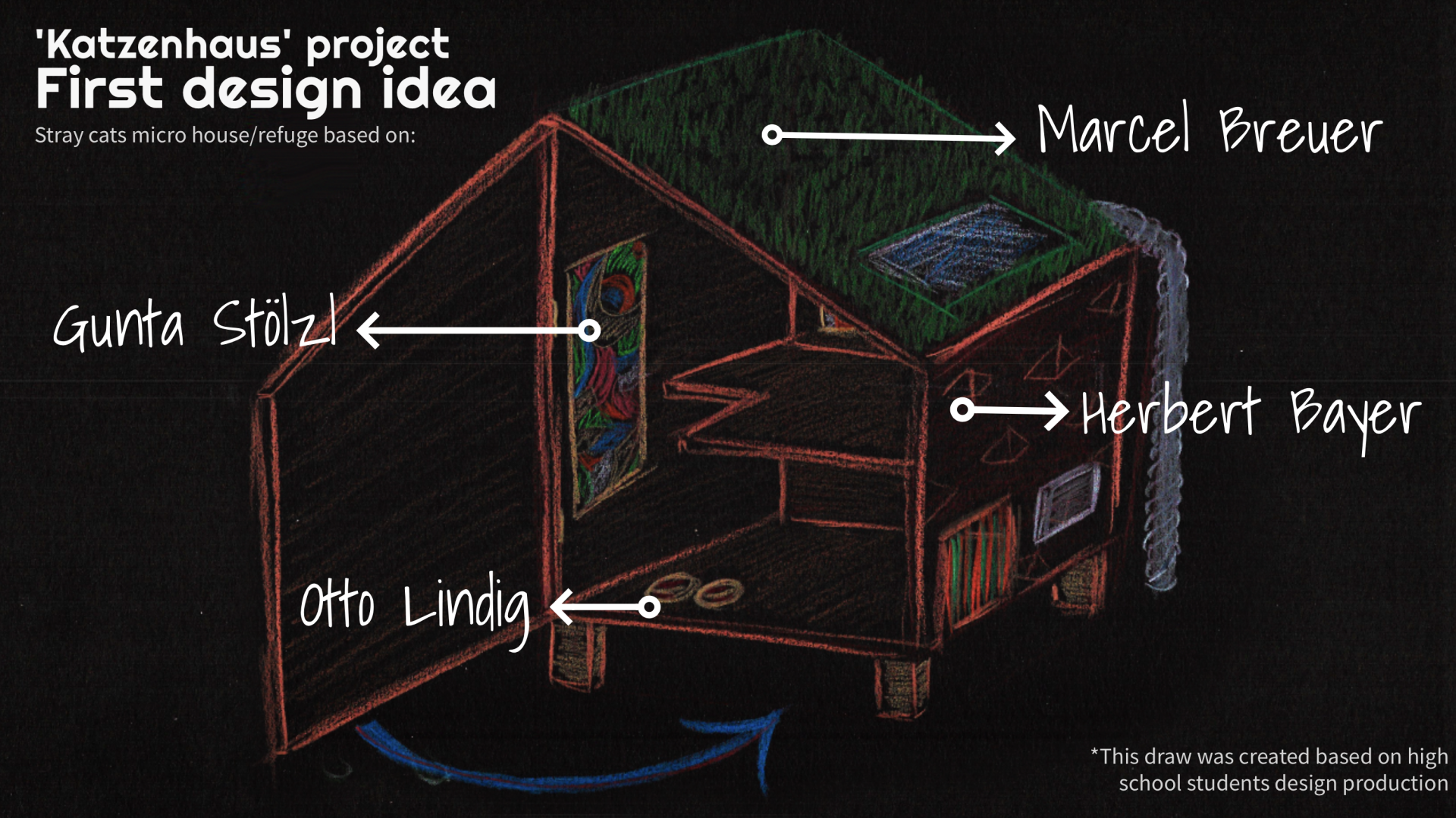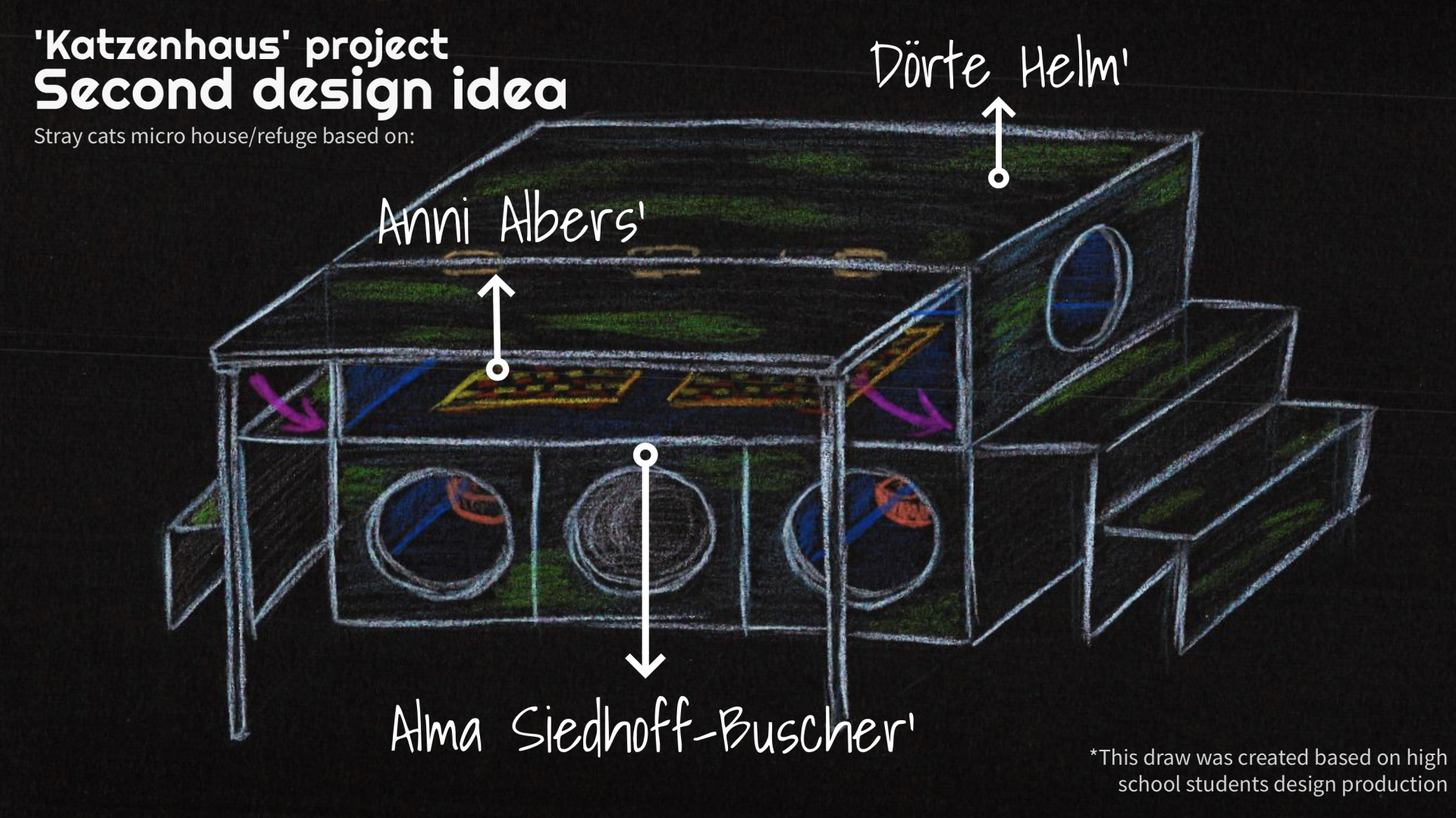'Katzenhaus' Project
Basic information
Project Title
Full project title
Category
Project Description
'Katzenhaus' Project is an interdisciplinary high school plan that proposes two objectives:
Sensitize the local population about the problem of feline colonies
Create, design, build and install micro houses for stray cats. A place where cats can eat, drink, stay the night, or just take refuge from bad weather
This project is based on Bauhaus object design principles combined with an ecodesign new perspective. Based on it, alumni have implemented their knowledge to create two micro houses desi
Project Region
EU Programme or fund
Description of the project
Summary
'Katzenhaus' project is an interdisciplinary high school project that pretends to sensitize the local population about the stray cats' situation and, at the same time to improve stray cats' life by installing micro houses or refuges with alimentary dispensaries across the town.
Micro houses design, construction, and installation of cat-counter services will be created by secondary school alumni of different levels and disciplines. The bases of this project are:
- Environmental education at school using ecodesign product design principles as a medium.
- Global Goals For Sustainable Development (Especially numbers 4. Quality Education, 11. Sustainable Cities and Communities, 16. Peace, Justice and Strong Institutions, and 17. Partnerships for the Goals.
- Project-Based Learning and Service-Learning methodologies to implement the project into classes.
- Work in values such as empathy and respect for diversity (including biodiversity).
- Gender equality perspective, recovering Bauhaus students' works (both gender) like Gunta Stölz or Alma Siedhoff-Buscher designs to recreate its productions into micro houses final designs.
At this moment, 'Katzenhaus' project is already part of the 'Rey Pelayo' secondary school annual program in Cangas de Onís (Spain) in close collaboration with two local animal protection associations where students have already successfully surpassed the design phase.
Key objectives for sustainability
'Katzenhaus' project was created to introduce more environmentally friendly concepts into art and design classrooms, with the purpose to innovate object design teaching focussed on sustainably.
Into these classrooms, students learned to reflect about materials' life, components degradation, and ways to postpone the end of an object's life studying the differences between design and ecodesign and implementing the micro houses designs in where they put its knowledge reflections.
Key objectives for aesthetics and quality
This project is based on Bauhaus product design and its ancients students' production. Like a roll game, each high school design student has had a specific Bauhaus student associated with. And, every student, imitating Bauhaus group house design and exposition production, was part of a workgroup. In there, students have designed a mixture between their Bauhaus students' object design.
Thanks to these structure and design principles, students have already implemented two different stray cats micro houses design that includes a basic ergonomy analyze that was projected to include doors that allow cleaning the interior of the refuge, entrance for cats, feeders and thick fabrics that help keep cats warm in winter.
At the same time, technology students are creating a system that would be situated at micro houses entrances. It will help animal protection associations to have an actual register of cats quantity in a specific place to prevent and control cats healthy problems or overpopulation.
Key objectives for inclusion
The project involves the local population, animal protection associations and a centre of education to improve their environment and close animals' life.
Also, students selected for this project came from different social context and knowledge affinities that, thanks to the use of Project-Based Learning and Service-Learning methodologies, it permit to easily adapt the project proposal to everybody, thinking about specific individual situations and promoting students own ideas and initiatives.
Innovative character
The principal innovative character of 'Katzenhaus' project idea was to introduce environmental education into arts and design subjects, showing that arts can also bring about a change.
Today, this idea grew up, and it involves design, technology, and metal welding signatures, converting the idea of a more conscious environmental and animal teaching into a basis of center principles.
That principal principle wanted to expand and cross center walls to involve the local community, creating a community sense in collaboration with local animal protection organizations and citizens.


